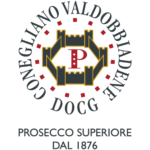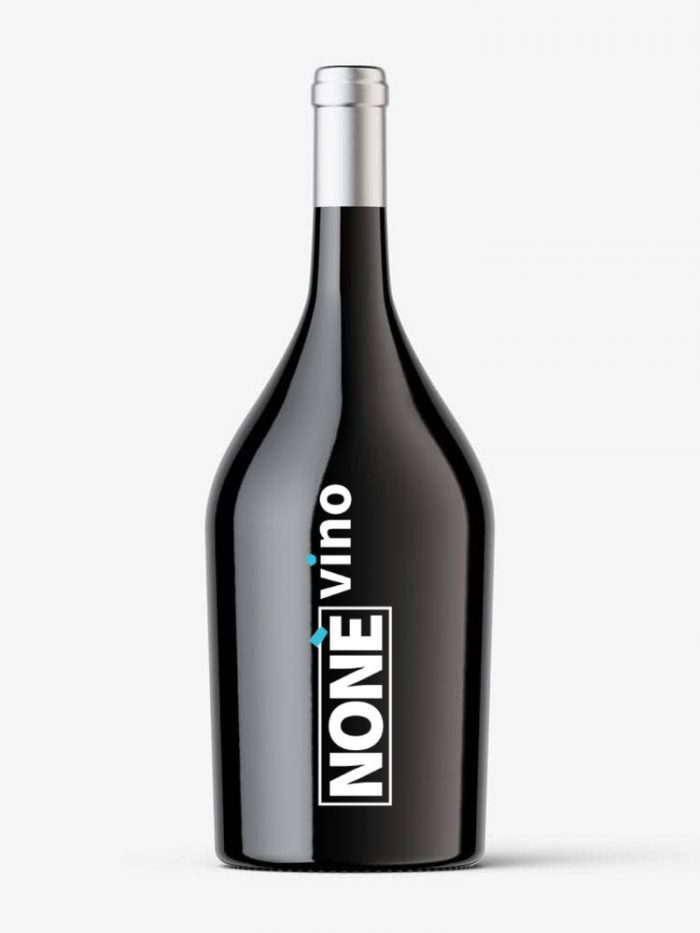Conegliano Valdobbiadene Prosecco DOCG Appellation
Protected Designation of Origin (PDO)


The hilly area of Conegliano Valdobbiadene Prosecco boasts an ancient tradition linked to the cultivation of the vine, the first written records of which date back to the tombstones of Roman colonists. Already at the end of the sixth century, the bishop of Poitier, Venanzio Fortunato, born in Valdobbiadene, remembered its hills as “the land where the vine eternally flourishes under the bare summit where the shady green protects and restores”.
Subsequently, the vocation for the production of white wines in the Conegliano Valdobbiadene area is testified by numerous documents, starting from the “Coneglianesi Statutes” of 1282, to those relating to the domination of the Venetian Republic, to the testimonies for the appreciation of the “white wine of the hills di Conegliano Valdobbiadene ”of the English, Habsburg and Polish rulers of the following centuries.
The first written mention of the cultivation of Prosecco in the hills of Conegliano Valdobbiadene, is the work of the noble from Conegliano Francesco Maria Malvolti , who in the VIII issue of the Giornale d’Italia of 1772 talks about the cultivation of vines in this area. From this period the citations and the fame of Prosecco grew throughout the Conegliano Valdobbiadene area, so much so that, towards the middle of the 19th century, it began to be cultivated in purity. Important in this sense are the quotes from two scholars; the Count Balbi Valier, selezionatore del biotipo chiamato Prosecco Balbi “con acini tondi e dal sapore e gusto fine, tendente all’aromatico”, ancor oggi apprezzato e largamente coltivato in tutto il comprensorio e quello dello storico Semenzi che, cita in un suo scritto “…squisitissimi vini bianchi sono la verdisa, la Prosecco e la bianchetta”, vitigni che ancora oggi compongono l’uvaggio del Conegliano Valdobbiadene.The winemaking tradition of this area and the scientific culture find concrete application with the birth in 1876 in Conegliano of the first School of Viticulture and Enology in Italy , from which the first Experimental Station of Viticulture and Enology developed in 1923 , still today the reference center for viticultural research and experimentation for the Italian Ministry of Agriculture.
In 1962 the producers, in order to protect the territory and the wine, meet in the protection consortium to define the production disciplinary, which allows to obtain, in 1969 from the Ministry of Agriculture, the recognition of the “Controlled Designation of Origin” Prosecco of the hills of Conegliano Valdobbiadene ”.
In 1966, the first Italian Wine Route was born, confirming the production tradition and the fame and beauty of this territory. The particular value of Conegliano Valdobbiadene was recognized by the Veneto Region in 2003 with the establishment of the first Italian sparkling wine district, also certifying the national importance of the denomination from an economic point of view.
In 2009, thanks to the continuous improvement of quality and the notoriety it has achieved in 40 years of national and international successes, the Conegliano Valdobbiadene Denomination was recognized by the Ministry of Agricultural and Forestry Policies as a Denomination of Controlled and Guaranteed Origin, placing this territory at the top of the quality of the Prosecco Denomination. In 2010, the Ministries of Agriculture and Cultural Heritage included Conegliano Valdobbiadene Prosecco in the Priority list of Italian candidacies for recognition as a UNESCO World Heritage Site.
The DOCG Conegliano Valdobbiadene Prosecco wine obtained the recognition of the Controlled Designation of Origin on 17 July 2009.
Territory
The geographical area dedicated to the production of Conegliano Valdobbiadene Prosecco DOCG wine extends over the hills located north of the Veneto region, in an area that is adequately ventilated, bright and favorable to the fulfillment of all the vegetative-productive functions of the vineyards.
The Conegliano Valdobbiadene Prosecco DOCG Wine Production Area is located in:
– province of Treviso and includes the territory of the municipalities of Cison di Valmarino, Colle Umberto, Conegliano, Farra di Soligo, Follina, Miane, Pieve di Soligo, Refrontolo, San Pietro di Feletto, San Vendemiano, Susegana, Tarzo, Valdobbiadene, Vidor and Vittorio Veneto.
The Conegliano Valdobbiadene Prosecco Superiore di Cartizze DOCG Wine Production Area is located in:
– province of Treviso and includes the territory of the municipality of Valdobbiadene, a hamlet of S. Pietro di Barbozza.
The Production Area of the grapes that can be used in the ” traditional practice of adding wines obtained from the vinification of Pinot bianco, Pinot nero, Pinot grigio and Chardonnay grapes ” is located in:
– province of Treviso and includes the territory of the municipalities of Cappella Maggiore, Cison di Valmarino, Colle Umberto, Conegliano, Cordignano, Farra di Soligo, Follina, Fregona, Miane, Pieve di Soligo, Refrontolo, Revine Lago, San Fior, San Pietro di Feletto , San Vendemiano, Sarmede, Segusino, Susegana, Tarzo, Valdobbiadene, Vidor, Vittorio Veneto, Asolo, Caerano S. Marco, Castelcucco, Cavaso del Tomba, Cornuda, Crocetta del Montello, Fonte, Giavera del Montello, Maser, Monfumo, Montebelluna, Nervesa della Battaglia, Paderno del Grappa, Pederobba, Possagno, S. Zenone degli Ezzelini, Volpago del Montello, Borso del Grappa and Crespano del Grappa.
Vinification and Aging
During the vinification phases, only loyal and constant oenological practices of the area are allowed, suitable to give the wines their peculiar quality characteristics.
The oenological practices of vinification of the DOCG Conegliano Valdobbiadene Prosecco wine include, among other things, that:
– The maximum yield of grapes into DOCG Conegliano Valdobbiadene Prosecco wine must not exceed 70%; if these parameters are exceeded within the limit of 5%, the excess will not be entitled to the DOCG. Beyond these limits the right to DOCG for the whole product lapses.
– The Conegliano Valdobbiadene Prosecco DOCG wines elaborated in the Spumante version can be marketed in all the types permitted by current legislation, with the exception of the “extra-brut” and “sweet” types.
– Conegliano Valdobbiadene Prosecco DOCG wines elaborated in the Sparkling version must be marketed in the types from “Dry” to “Amabile”.
– In the elaboration of the Conegliano Valdobbiadene Prosecco DOCG sparkling wine the ” traditional practice of adding with wines obtained from the vinification of Pinot bianco, Pinot nero, Pinot grigio and Chardonnay grapes “, alone or together, is allowed.
– In the designation of Conegliano Valdobbiadene Prosecco DOCG sparkling wine it is allowed to use the term “Millesimato”, provided that the product is obtained with at least 85% of the wine of the reference year, which must be indicated on the label.


